Do you want to learn more about data visualisation theory and history? Do you want to be inspired by examples of awe-inspiring visualisations? Do you want to be able to create more effective visualisations? Or are you interested in absorbing every bit of information from authorities on data visualisation? These are all great topics and knowing more about the topic will improve your use of Tableau. As a part of our data visualisation field guide, here is a list of books we have read and found extremely useful over the last few years. This is far from a definitive list, of course – there are many, many more.
An earlier version of this article was written on the Tableau blog by Andy Cotgreave.
1. "Information Dashboard Design: Displaying Data for At-a-glance Monitoring” by Stephen Few
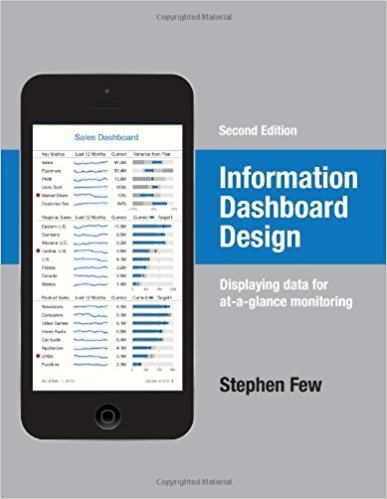 Author: Stephen Few
Author: Stephen Few
Website: Perceptual Edge | Amazon
This is a fantastic resource packed full of examples of good and bad dashboards. In explaining how to create great dashboards, Stephen Few also gives a great introduction to the principles of the theory of data visualisation and design. We would also recommend any of Stephen Few's other books, but this one is the most accessible.
This book focuses less on data visualisation itself and more on using visualisation techniques to your advantage in order to efficiently and critically monitor data at a glance. Dashboards are a common way to keep track of multiple sets of data, and Few’s goal is to help make sure dashboards aren’t unwieldy and inefficient, as they often can be. In this book, he points out common mistakes with dashboard design as well as best practices to avoid falling into those traps.
2. "Beautiful Visualization, Looking at Data Through the Eyes of Experts by Julie Steele, Noah Iliinsky"
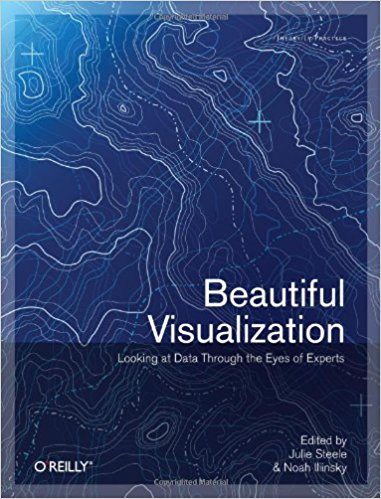 Authors: Julie Steele, Noah Iliinsky
Authors: Julie Steele, Noah Iliinsky
Website: O’Reilly Media | Amazon
Steele and Iliinsky’s book is a look into the thought process and design behind real-world examples of data visualisation projects. 24 experts weigh in on their methods, approach and perspectives in designing data visualisation for their respective fields. "Beautiful Visualization” explores storytelling with data, communicating through visual indicators such as colour and research methods to put it all together.
This book describes the design and development of some well-known visualisations. It's a great way to learn how others approach visual design. A particular insight is that every single author points out that collecting and cleaning their data is the hardest part of any project. It is heartening to know that this is a pain point for even the best analysts!
3. "The Accidental Analyst: Show Your Data Who’s Boss” by Eileen and Stephen McDaniel
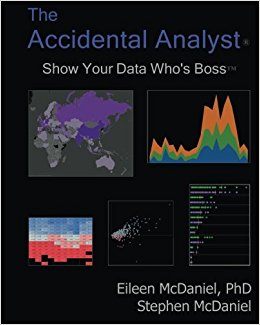 Authors: Eileen McDaniel, Stephen McDaniel
Authors: Eileen McDaniel, Stephen McDaniel
Website: Freakalytics
Purchase: Amazon
This book is about what to do when you find yourself suddenly thrust into the world of analytics projects, even when you weren't trained as an analyst. Lots of business users find themselves in this position every day. We have access to data, but maybe our background is in sales, HR, editorial or operations. This book provides a great template for breaking down any analytics project into distinct segments and delivering something successful and effective.
Whether you’ve landed a new job as a data analyst or had the responsibility dropped on you unexpectedly, this book is great for anyone looking to start digging into data for results. "The Accidental Analyst” provides a step-by-step guide on how to decide what questions you want answered, collect the data, organise the information, display it through visual graphics and communicate the results.
4. "The Functional Art” by Alberto Cairo
 Author: Alberto Cairo
Author: Alberto Cairo
Website: The Functional Art
Alberto Cairo is a data journalist and teaches information graphics and visualisation. What is great about this book is that it explains how important it is to stick as close to best practices as possible but also ensure that your work is beautiful in order to engage the end user.
"Functional art” as a concept is something that serves a purpose while still retaining aesthetic qualities that make it appealing and captivating. Cairo argues that this is the goal with data visualisation as a whole. In this book, Cairo reviews the aesthetic qualities of data visualisations and how to create good-looking pieces while still keeping within industry best practices. He focuses on using colour and design to enhance the aesthetic and taking advantage of our brains’ quirks when perceiving and remembering information.
5. "The Visual Display of Quantitative Information” by Edward R.Tufte
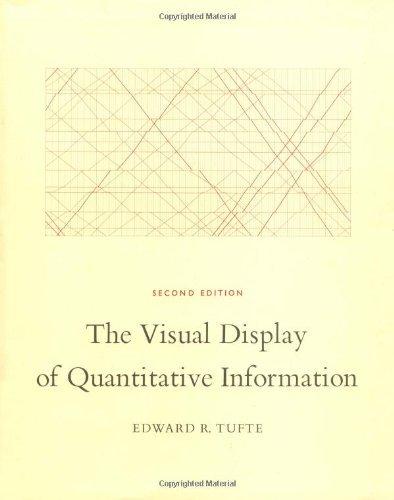 Author: Edward R. Tufte
Author: Edward R. Tufte
Website: Edward Tufte | Amazon
While Edward Tufte’s book was first published in 1983 and is beginning to show its age, it covers the theory and design of data graphics and is illustrated with some of the best and worst examples. Now over 30 years old, it is still a great introduction to some timeless design theories and provides a historical context for data visualisation. The book includes 250 illustrations of data-visualisation examples of statistical graphics along with detailed breakdown analysis.
6. "Cartographies of Time: A History of the Timeline” by Daniel Rosenberg, Anthony Grafton
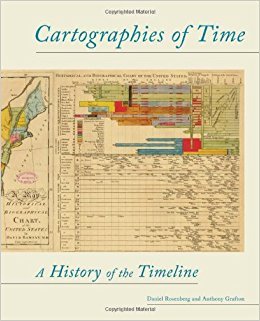 Authors: Daniel Rosenberg, Anthony Grafton
Authors: Daniel Rosenberg, Anthony Grafton
Website: Amazon
If you want to read up on the history of data visualisation, this is a great book. It focuses on the development of visually representing time, which has been a significant endeavour. It is fascinating and reveals that the challenges we face today in data visualisation are similar to those faced hundreds of years ago.
The study of data visualisation may be more of a modern endeavour, but the challenges of representing information in visually accessible ways aren’t so different across history. From dashboards to ancient maps, we’ve been trying to display time-specific data for generations. "Cartographies of Time” presents a comprehensive account of Western civilisation’s attempts at visual timelines through the ages. The book covers graphic representations of time in Europe and North America for almost 600 years, complete with illustrations.
7. "Information Graphics” by Sandra Rendgen, Julius Wiedemann
 Authors: Sandra Rendgen, Julius Wiedemann
Authors: Sandra Rendgen, Julius Wiedemann
Website: Amazon
This is a huge coffee-table book. It has over 400 examples of information graphics from around the world, covering data visualisation in journalism, government, education, business and more. There are also some introductory essays on data visualisation history and theory as well as data journalism.
"Information Graphics” fulfils the role of an almanac in data visualisation. The first half features essays on historical context and practice. In the second half of the book, over 200 projects and 400 examples of information graphics from around the world in a variety of disciplines are presented, divided into chapters by location, time, category and hierarchy.
8. "Visual Thinking for Design” by Colin Ware
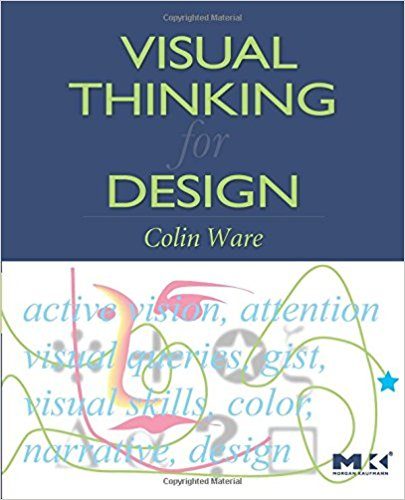 Author: Colin Ware
Author: Colin Ware
Website: Data Visualization Research Lab | Amazon
If you are interested in the science behind data visualisation, this book is amazing. It's a great introduction to design and cognitive psychology. An understanding of this will make you a better visualisation designer.
This book goes into the science and psychology behind design and how you can apply it to data visualisation in order to communicate your message more effectively. It presents design as more of a tool, using specific techniques to take advantage of the brain’s process of perception and thinking. It includes hundreds of examples in text as well as visual full-colour diagrams.
9. "Storytelling With Data: A Data Visualization Guide for Business Professionals” by Cole Nussbaumer Knaflic
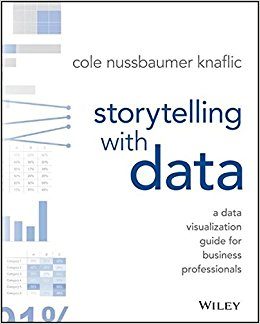 Author: Cole Nussbaumer Knaflic
Author: Cole Nussbaumer Knaflic
Website: Storytelling With Data
While a lot of data visualisation books focus on the theory of the subject or the nitty-gritty how-to using graphics in practice, this book focuses on the WHY: why we use visualisation with data. Data itself is a tool, and it’s up to us to craft the story with it. Much as writers strive to "show, don’t tell” with their text, "Storytelling With Data” emphasises using visuals to convey the meaning of the data rather than hoping that the data will speak for itself. The book touches on honing the message of your data by choosing the right type of visual or graph, directing the reader’s attention, and how to effectively communicate using data.
10. "Knowledge is Beautiful” by David McCandless
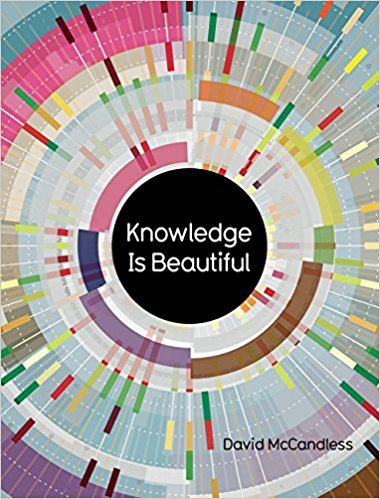 Author: David McCandless
Author: David McCandless
Website: Information Is Beautiful
Written by the same author as the data visualisation blog Information is Beautiful, "Knowledge is Beautiful” uses visuals to reveal the world. The book features infographics to present complex information, showing connections and relationships in visual displays. The book traverses data from art to science, from health to popular media, to show patterns and connections in our lives. From charting popular dog breeds to mapping out the exact relationships of the Middle East, this book will satisfy your curiosity itch.
11. "Visualize This: The Flowing Data Guide to Design, Visualization, and Statistics” by Nathan Yau
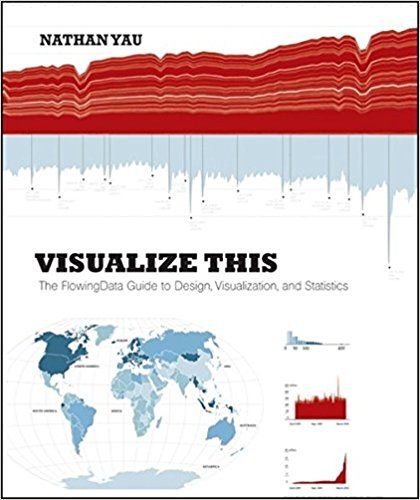 Author: Nathan Yau
Author: Nathan Yau
Website: Flowing Data | Amazon
In this book, Nathan Yau provides practical tips and step-by-step tutorials to formulate data to tell a story. The book focuses mostly on statistical data with technical references and putting visualisation into form through programming. "Visualize This” also features tools and software recommendations to design graphics for both the web and print, along with code examples for web programming like Python and JavaScript.
12. "The Big Book of Dashboards” by Steve Wexler, Jeffrey Shaffer, and Andy Cotgreave
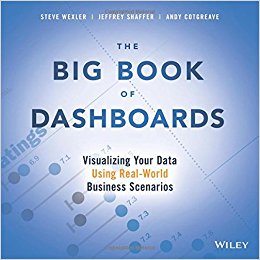 Authors: Steve Wexler, Jeffrey Shaffer, and Andy Cotgreave
Authors: Steve Wexler, Jeffrey Shaffer, and Andy Cotgreave
Website: Tableau | Amazon
If you need to look at a tonne of dashboards for inspiration, look no further. "The Big Book of Dashboards” covers all sorts of dashboards for various industries and departments, using examples from healthcare, marketing, finance, customer service, sports and others.
Real-world applications are the highlight here, covering the necessity of making sure your data is presentable whether you’re at your computer, presenting in a conference room or on mobile on-the-go. As we saw with "Information Dashboard Design,” designing a dashboard is nearly as important as the data itself and "The Big Book of Dashboards” addresses practical and psychological factors you may run into before they even come up.